Completed: student 34 gr. Suchkova A.I. Checked: Kukushkin V.A. Presentation on the topic: "Desmurgy"
Desmurgy (Greek desmos - connection, bandage + ergon - business) - the doctrine of bandages, their correct application and application for various injuries and diseases. Bandage - a remedy for the treatment of injuries and diseases, consisting in the imposition of a dressing material on the affected focus and its fixation or immobilization of the affected area itself.
Depending on the characteristics of the dressing material, the dressings are: SOFT (adhesive, kerchief, bandage, etc.) SOLID, or hard (dextrin, starch, gypsum, medical splints)
Classification of dressings by bandaging technique: Circular (circular) Spiral Creeping Cruciform (eight-shaped) Turtle Spike Returning
Requirements for a properly applied bandage Cover a large area of the body; Do not disturb lymph and blood circulation; Do not disturb the patient; Have a neat appearance; Stay firmly on the body.
Correct and incorrect dressing.
A kerchief supporting the upper limb The injured limb is bent at the elbow at a right angle and placed just below the middle of the kerchief, the top of which is directed towards the elbow, and the base is located on the chest along the axis of the body. The lower corner of the kerchief goes around the forearm and is raised obliquely upwards to the shoulder of the same name. The upper corner is raised to the opposite shoulder. The position of the upper limb is checked, and both ends are tied in a knot at the back of the neck. The top of the kerchief goes around the elbow and is fixed in front with a pin.
Types of bandages Sling bandage on the nose. A strip 75 cm to 1 m long is torn off from the bandage. The ends of this strip are cut to obtain four ties and an uncut middle about 15 cm long. The wound on the nose is closed with a sterile napkin. Over the napkin across the face impose the middle part of the sling. The ties are crossed in the cheekbones. The upper one is lowered, held under the ears and tied in a knot around the neck. The lower ties are lifted up and tied at the back of the head.
Circular or circular bandage It is fixative, consists of several rounds superimposed one on top of the other. It serves as an integral element of any bandage dressing.
Spiral bandage Starts in the same way as a circular bandage. Then, after two or three circular rounds, the bandage is led slightly in an oblique direction, covering the previous move by two-thirds. An ascending bandage is distinguished when the tours of bandages go from bottom to top, and a descending one - from top to bottom. When bandaging the lower leg or forearm, when the thickness of the limb is not the same, the bandage is applied with kinks, and the kinks should be on the same side and along the same line.
Creeping bandage It is used to fix a large length of dressing material on the upper and lower extremities. The creeping bandage is not the main one, but only preliminary before applying a spiral or any other bandage. The application of a creeping dressing eliminates the need for an assistant, helps prevent contamination of the dressing during the dressing process, and contributes to a more correct adaptation of the dressing. It starts with a circular bandage in the area of the wrist joint or in the area of the ankles, followed by a rapid displacement in the proximal direction. Between the individual rounds there is a free space equal to approximately the width of the bandage.
Converging and diverging tortoiseshell bandage A tortoiseshell bandage is used in two cases - convergent and divergent. Superimposed on large joints - knee, elbow, heel-ankle. A divergent bandage begins to be applied with two or three circular turns of the bandage at the same level with a divergence of subsequent turns from the center to the side, up and down. A converging tortoise bandage differs from a diverging bandage in that the turns of the bandage, starting at the periphery, approach the center with each round, where the bandage ends.
Figure-of-eight bandage A crossed figure-of-eight bandage is used when bandaging areas of the body that form bends. This bandage was called eight-shaped for its resemblance to the number eight, which it has due to the crossing bandage moves. If the bandage moves do not intersect in one place, but on a certain line one after another, then the bandage is called spike-shaped. The eight-shaped bandage on the ankle joint begins with two fixing circular motions of the bandage on the lower leg above the ankles. Further from the inner ankle, the bandage is carried through the rise of the foot to its outer edge, makes a full turn around the foot and another half turn (from the outer edge of the foot along the plantar surface to its inner edge). From the inner edge of the foot, the bandage is directed through the instep of the foot to the outer ankle, then along the back surface of the lower leg to the inner ankle and again to the outer edge of the foot - then the bandage moves are repeated
Spike bandage Used to cover the shoulder joint and armpit. There are two types of the named dressing: ascending and descending. Ascending spica bandage on the area of the shoulder joint Sequence of actions: A fixing tour is carried out around the upper third of the shoulder. Then the bandage is led along the outer surface of the damaged shoulder from behind through the armpit to the shoulder. Further along the back, through a healthy armpit, it is directed to the anterior surface of the chest. Then the bandage is transferred to the shoulder and, crossing the previously imposed tour, a loop is made around the humerus from the inside. Again, after crossing in the area of the shoulder joint, the bandage lies on the previous round (2nd), closing it by 2/3 of the width, and completely repeats its course, going into the armpit along the healthy side. Repeat the moves of the bandage until the entire joint is covered. Secure the end of the bandage with a pin. Descending spica bandage on the area of the shoulder joint Sequence of actions: 1. A fixing tour is done around the chest at the level of the armpits (Fig. 51.6). 2. The bandage is carried out from the armpit of a healthy shoulder obliquely along the anterior surface of the chest to the anterior surface of the shoulder joint to be bandaged. 3. It goes around it, passes through the armpit forward and up to the back and extends into the armpit of the opposite shoulder. Thus, eight-shaped descending coils are formed with a cross on the front surface of the shoulder joint being tied. 4. The dressing is finished with a fixing tour in the upper third of the shoulder.
Head and neck bandages
Headband in the form of a "cap" Indicated for head wounds to stop bleeding and fix the dressing. Sequence of actions: 1. Cut off a tie about a meter long from the bandage. 2. They place it in the middle on the crown, the ends are held by the hands of the patient or assistant. 3. Another one-headed bandage is used to make a fixing tour around the forehead and back of the head. 4. Continue it and reach the tie. 5. The bandage is wrapped around the tie and led along the back of the head to the tie on the other side. 6. Wrap the bandage around the tie again and lead further around the head slightly above the fixing tour. 7. Repeated strokes of the bandage completely cover the scalp. 8. The bandage is tied to one of the strings, and it is tied under the chin.
Bandage on the lower jaw and cranial vault - "bridle" Indicated for injuries of the face, chin area and scalp. Sequence of actions: 1. The first round is fixing, i.e. circular around the head through the frontal and occipital tubercles. 2. The next round goes through the back of the head to the chin. 3. Then - up through the chin to the crown. 4. Then - down to the chin. 5. Again to the crown. 6. The penultimate round is passed through the chin around the head. 7. Fasten the bandage around the head.
Bandage on all fingers of the hand "Glove" Sequence of actions: 1. Bandaging begins on the left hand from the little finger, on the right - from the thumb. 2. Make circular locking moves in the lower third of the forearm. 3. Then the bandage from the radial edge of the wrist joint obliquely crosses the back of the wrist towards the IV interdigital space and rises in the form of a creeping bandage to the first phalanx of the V finger. 4. From here, apply the usual spiral bandage to the base of the finger. 5. Having finished bandaging the finger, the bandage is transferred to the rear of the hand and directed obliquely to the ulnar side of the wrist joint.
Bandage "mitten" Sequence of actions: 1. The first round of the bandage descends longitudinally from the lower third of the forearm to the back of the hand and, bending around the fingers, passes to the palm 2. The bandage then goes to the wrist, where it is bent and the returning stroke is made again through the palm, fingers on the back of the hand. 3. Several of these recursive tours completely cover the fingers. 4. The bandage is finished with spiral upward turns of the bandage from the fingers to the hand with fixation on the forearm in circular motions.
Bandage Deso Used to fix the upper limb in case of fractures and dislocations). shoulder 1. A cotton pad (roller) is placed in the armpit. 2. The forearm is bent at the elbow joint at a right angle. 3. The hand is transferred to the chest. 4. The fixing round is always carried out to the sore arm around the body, pressing the shoulder tightly against the chest. 5. Next, the bandage is led through the armpit of the healthy side along the front surface of the chest obliquely on the shoulder girdle of the diseased side. 6. From there, the bandage is lowered down the back of the patient's shoulder under the elbow. 7. They bend around the elbow joint and, supporting the forearm, direct the bandage obliquely upwards into the armpit of the healthy side. 8. Then - obliquely up the back of the chest to the shoulder girdle of the injured side. 9. Spend a bandage on the front surface of the patient's shoulder under the elbow and go around the forearm. 10. The bandage is directed to the back surface of the chest in the armpit of the healthy side. 11. Rounds of the bandage are repeated until the shoulder is completely fixed.
Bandage Deso
Spiral bandage on the chest Sequence of actions: 1. Cut off a strip of bandage about 2 m long. 2. Put it on the shoulder girdle so that one end is in front and the other is behind. In circular ascending strokes of the bandage with overlapping of the underlying tours by 1/2 of the width, the chest is bandaged to the armpit 3. The end of the bandage is fixed to the bandage. 4. The free ends of the hanging bandage are tied on the opposite shoulder girdle.
Bandage on the mammary gland Indicated for operations, injuries, burns, inflammatory diseases of the mammary gland in order to fix the dressing material, as well as to maintain and squeeze the gland itself. Sequence of actions: 1. The mammary gland is taken up and held in this position until the dressing is completed. 2. The bandage is fixed with circular tours under the gland (Fig. 67). 3. The next round is carried out obliquely upwards under the gland through the shoulder girdle of the healthy side. 4. Further, obliquely down into the armpit and under the diseased gland, they pass into a circular tour. 5. The next tour is again oblique, but somewhat higher than the previous one, which leads to a rise in the gland. 6. If it is necessary to compress the mammary gland, the tours of the bandage continue to be applied until the entire gland is covered with a bandage.
Occlusive (sealing) bandage Used for open pneumothorax. Sequence of actions: 1. The skin around the wound is treated with an antiseptic. 2. The sterile side of the rubberized shell of the IPP tightly closes the wound of the chest wall. 3. Place both pads of the bag with the side that has not been touched by hands on the rubberized shell. 4. In case of a through wound, the rubberized shell is torn into two parts and the wounds of the chest are closed with them, after which one pad is placed on the inlet, and the other is moved along the bandage and placed on the outlet. 5. Gauze pads are strengthened with bandage moves. 6. At the end, the bandage is fixed with a pin or by tying ribbons
Desmurgy (from the word desma - bandage) studies the methods of applying dressings and forms of dressing application. Dressing is understood as a part of the material applied directly to the affected area of the animal's body in order to protect it from secondary injury, infection and to stop bleeding. A bandage is called that part of the material that is used to fix the dressing or hold it at the site of the lesion, to apply pressure on a certain area, to create rest, to prevent the loss of individual organs and viscera through natural or artificial holes.

According to the purpose of the dressing, there are: aseptic - aseptic - for closing aseptic wounds; antiseptic antiseptic - when they are impregnated with bactericidal substances (iodoform, rivanol, antibiotic solutions); wet wet - when they are impregnated with solutions at the time of application or subsequently; warming warming - when a layer of cotton wool and oilcloth are placed over the bandage to get warm; pressing pressing, for example, to stop bleeding, reduce granulations; supporting supporting - which hold an aseptic bandage; bandage - to hold the internal organs with hernias; immobilizing immobilizing - limiting the mobility of body parts in case of bone fractures, sprains and ruptures of ligaments and tendons.

Type of dressing material Gauze (tela) Gauze (tela) is a rare cotton fabric made of slightly twisted threads. By density, rare-loop and medium-loop gauze are distinguished. The first contains 12x12 threads in one square centimeter, the second 15x15. Cotton wool (gossypium Cotton wool (gossypium) is made from cotton. Each individual hair represents a plant cell, inside which there is a tubule - a typical capillary. Lignin (lignum) Lignin (lignum) has the appearance of a highly porous, white corrugated paper. absorbency surpasses all dressings: its moisture capacity reaches 650% in three days. Cellophane - Cellophane - transparent, thin, durable sheets, impervious to air and moisture, well withstands boiling and autoclaving.














1. The following types of dressings are distinguished: (by appointment) 2. Protective (or aseptic) dressing. Function - prevention of secondary infection of the wound. 3. Medicinal bandage. Function - providing constant access to the wound of the medicinal substance, which is usually moistened with the lower layers of the bandage, 4. Hemostatic (or pressure) bandage. The function is to stop bleeding. 5. Immobilizing bandage. Function - immobilization of a limb or its segment. 6. Bandage with traction. Function - traction of bone fragments. 7. Corrective bandage. Function - elimination of deformations. 8. Occlusive dressing. Function - wound sealing (special dressing for chest wounds with open pneumothorax). 9. A compress bandage is used in the treatment of inflammatory infiltrates, thrombophlebitis, etc. A compress bandage provides a long-term effect on the tissues of a drug solution that does not have the ability to evaporate. Most often, semi-alcoholic (or vodka) compresses are used, as well as compresses with ointments (Vishnevsky ointment). 2
The classification of dressings according to the type of material used is very simple. There are the following types of dressings: gauze dressings (bandage and non-bandage), fabric dressings, plaster casts, splinting, special dressings (zinc-gelatin dressing in the treatment of trophic ulcers, etc.). 3



The finished bandage must meet the following requirements: the bandage must reliably perform its function (fixation of the dressing on the wound, immobilization, stop bleeding, etc.), the bandage must be comfortable for the patient, the bandage must be beautiful, aesthetic. 6













Applying a bandage Dezo; finished bandage. Applying a bandage Dezo; passing a bandage through the shoulder girdle

desmurgy
Desmurgy is the doctrine of the rules for applying and applying bandages. A bandage is a dressing material attached to the patient's body for therapeutic purposes. It consists of a dressing, which is applied to the wound, the fixing part.
A dressing is a material that is applied to a wound for therapeutic purposes.
Dressing is a Bandage Replacement.
soft hard bandages Plaster Cleol Bandage Bandage Dextrin Starch Gypsum Medical Splints
Purpose of dressing To hold the dressing on the surface of the body (strengthening the dressing); Apply pressure to underlying tissues (pressure bandages); Immobilize any part of the body (fixed bandages); Create the possibility of traction for the limb, head (stretching bandages).
Adhesives Used for minor injuries and on the area of the surgical wound. The hairline is shaved off.
Adhesive dressing A dressing applied to a wound that is secured with several strips of adhesive tape (adhesive tape) to healthy areas of the skin. Disadvantages: Manceration and unreliable fixation when wet.
Kleol bandage Kleol is a solution of pine resin in alcohol and ether, in equal amounts. The wound is closed with a bandage. The skin around is smeared with cleol and allowed to dry a little. Cover with stretched gauze, the edges are pressed tightly against the skin. Disadvantage: Weak strength and contamination of the skin with dried glue.
Colloidal bandage Gauze is glued with collodion (a solution of nitrocellulose in a mixture of alcohol and ether). The wound is covered with a napkin and the edges of the napkin are smeared with collidium. Apply collodion with a spatula; kept for 7-8 days. Disadvantage: Low elasticity and skin irritation.
Kerchief dressings Triangular piece of dressing material (gauze, calico)
Bandage dressings Are applied from a part of the bandage, from one or more rolls of the bandage. The rolled up part of the bandage is the head, and the end is the tail.
Narrow bandages Medium bandages Wide bandages 3-5-7 cm, for bandaging fingers, feet 10-12 cm; for dressing the head, hand, forearm, lower leg 14-18 cm; for dressing chest, mammary gland, thigh.
Requirements for a properly applied bandage Cover a large area of the body; Do not disturb lymph and blood circulation; Do not disturb the patient; Have a neat appearance; Stay firmly on the body.
Bandaging rules Location facing the patient to monitor the patient's condition; Comfortable position of the patient to provide good access to the bandaged part of the body; The bandaged area of the body is given a position that remains after the bandage is applied (upper limb - forearm bent at an angle of 90 degrees, lower limb - foot at a right angle and slightly bent at the knee joint);
Bandaging rules The bandaged area should be at the chest level of the bandager. Bandaging is performed from the periphery to the center; from left to right from the side of the bandage; Each next move must cover the previous one by 2/3 or half;
Bandaging rules Do not tear off the head of the bandage from the bandaged part of the body and evenly stretch it; When applying a bandage to areas of the body of a conical shape, for a better fit, the bandage is twisted after 1-2 turns (on the side opposite to the wound);
Bandaging rules Bandaging begins with fixing, circular bandage moves; Bandaging is done with both hands: one rolls the bandage, and the other straightens it to apply evenly; The end of the bandage is fixed.
Types of dressings Sling dressing. Made from part of a bandage. Both ends are cut longitudinally towards the middle, without connecting them completely. (nose, chin, occiput, crown).
T-shaped bandage. Bandage bandage, to the middle of which the end of another band is sewn or thrown over (crotch).
Circular or circular bandage One round of the bandage is superimposed on another, completely covering the previous one.
Spiral bandage Each subsequent round covers the previous half or a little more. Varieties: ascending - from the bottom up, descending - vice versa.
Creeping bandage As spiral, but the tours do not touch each other.
Cruciform, or eight-shaped bandage The tours of the bandage intersect with each other.
Spike bandage Crossing along one line, reminiscent of an ear. Variety - eight-shaped.
Turtle bandage More often used in the area of bent joints. Two types: divergent and convergent.
Returning bandage On the stump of the limb after amputation
Headbands Cap of Hippocrates Cap - cap
Headbands Bandage for one, both eyes Bandage frenulum Neapolitan bandage
Neck bandages Upper neck bandage Lower neck bandage
Bandage on the upper limb Bandage on one finger Bandage on 1 finger Bandage glove Returning bandage on the hand Bandage on the forearm (spiral) Bandage on the elbow joint, on the shoulder, on the armpit
Chest bandage Occlusive bandage (spiral, cruciform)
Bandage for one, two mammary glands Deso bandage Velpo bandage
According to the function of the bandage are divided Aseptic protective - prevents secondary infection of the wound; Medicinal Compress - long-term effect on the wound; Fixing - fixes a part of the body in a certain position
Hard dressings fixation distraction
Fixation Fixation of the damaged part of the body. Kramer tire Filberg tire Plywood
Distraction splints
Gypsum Gypsum is calcium sulfate calcined at t 140C. After calcination, it is easily ground into a white powder, when mixed with water, a mushy mass is obtained, and quickly hardens. In the air it absorbs moisture, in this its quality deteriorates. Stored in galvanized boxes in a dry place.
Quality checking. Samples: Equal portions of gypsum and water are mixed, the resulting mass should harden after 6-7 minutes, when pressed, it should break, but not crumble. The powder is squeezed in a fist, with good quality after unclenching it crumbles; when bad - remains in the form of a lump.
Benefits: Immobilization Closes the wound Does not interfere with drainage
Circular (deaf) Slit (removable) Fenestrated Bridge splint Langette Langet-circular Thoraco-bronchial Corsets Cribs
Rules for applying plaster The site is given an average physiological position; Two adjacent joints are also immobilized; The bandage should not squeeze the tissue, but should not be too loose; After applying the bandage, check if it is squeezing the main vessels.

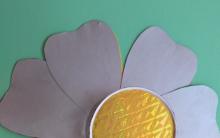
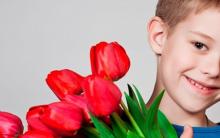
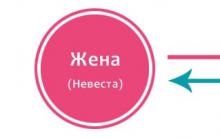
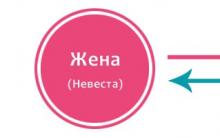
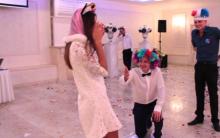





How to make a bird costume with your own hands Carnival bird costume
Scenario for 25 years girl cool houses
Examples of serious nominations for rewarding employees
The script for the anniversary of the girl (young woman) "A star named ...
Comic nominations for a corporate party